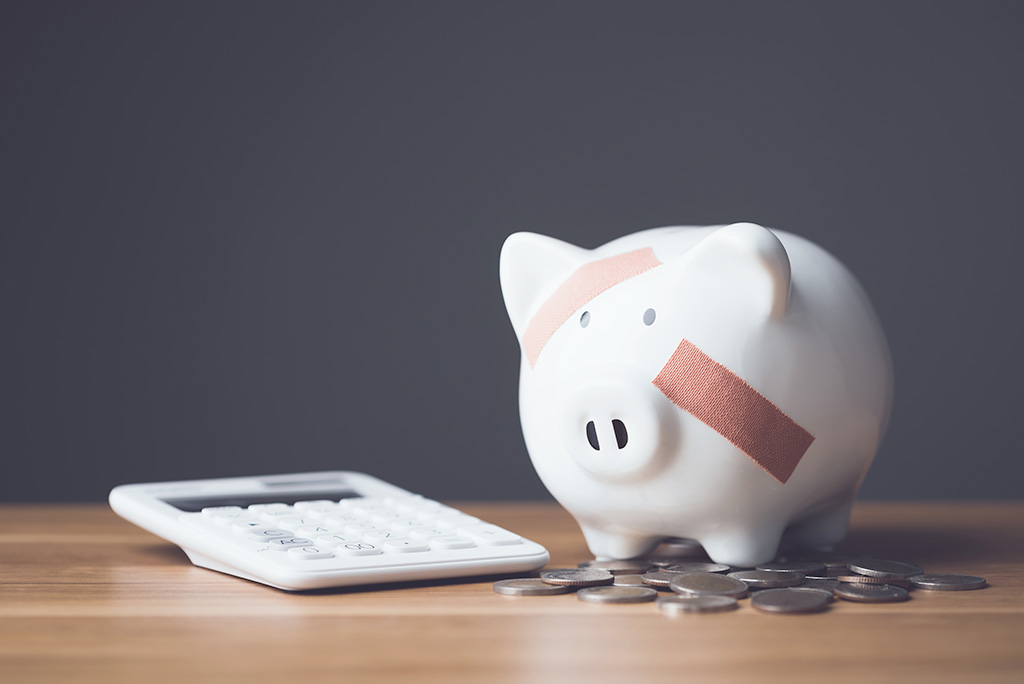What is a mortgage release?
A mortgage waiver is the process of cancelling or releasing a registered mortgage on a property. This enables the new owner to obtain a clear title for the property, free of mortgage charges. A mortgage is a legal agreement by which a bank or other creditor lends money at interest in exchange for taking title of the debtor’s property, enabling banks to protect themselves in the event of non-repayment of the loan. It is therefore important for buyers to ensure that the property they are purchasing is mortgage-free.
The lifting of a mortgage is a notarized deed that releases the property from this guarantee, proving that the loan has been repaid in advance. Removal of the mortgage may be necessary in the event of sale of the property or redemption of the loan. In this case, a release fee of between 0.3% and 0.6% of the loan amount is charged.
It’s important to understand that there are fees for lifting or cancelling a mortgage.

Why lift a mortgage?
There are two situations in which you may need to lift a mortgage.
Firstly, in the case of mortgage re-financing, if you wish to renegotiate the terms of your mortgage as the owner of a house or apartment, the new creditor (the bank or organization re-financing you) will ask the notary to cancel the previous mortgage and record the details of the new debt (the financing they will be granting you) in the mortgage deed of your re-financing.
Secondly, when you resell your property, it may be necessary to lift the mortgage in order to transfer clear title to the buyer. Of course, this is not the case if the loan on your property is still outstanding and the mortgage has not been discharged after the last instalment of your loan. Please note that there is no such thing as an automatic discharge of a mortgage. It’s up to you to take the necessary steps to obtain a discharge.

Refinancing your mortgage
When you want to refinance your mortgage, in most cases a mortgage discharge is an obligation. It releases the existing mortgage, which will be replaced by a new mortgage under different conditions (including the amount guaranteeing the new bank the amount to be registered as collateral).
When reselling your property
When selling a property, a mortgage release is necessary to transfer title to the buyer. This ensures that the buyer obtains a mortgage-free property.
How much does it cost to discharge a mortgage?
When financing a property with a mortgage, release fees are of crucial importance. This notarial act, carried out by a notary whose fees can fluctuate between $300 and $600, takes into account the complexity of the file, the time needed to finalize it and the obligations inherent in its completion. The pivotal document in your real estate project, whether buying or buying out, is the mortgage discharge. The latter must be recorded in the Land Register of Quebec, at an additional cost of approximately $150.
The mortgage release, or mortgage discharge procedure, acts as a guarantee against the debtor’s default, and is essential to certify the end of the loan and thus free the property from any subsequent seizure. For example, under the original agreement, if the borrower defaults, the loan may be subject to seizure or even auction of the property. The precise definition of these fees and terms is usually set out in the original loan agreement. That’s why it’s so important to understand these obligations before entering into a mortgage agreement.

Who pays the notary fees for a release?
Generally speaking, release fees, like notary fees for a discharge, are payable by the borrower. The borrower must pay these fees in the event of early repayment, resale of the property, or at the end of the loan term. Repayment of the mortgage terminates the creditor’s security interest in the property. This process is formalized by the deed of discharge, which is sent to the financial institution (bank or other lending institution) for cancellation of the mortgage registration at the mortgage registry office.
In certain cases, the debtor may request that a mortgage be lifted before the end of the loan term, particularly in the event of resale of the property or redemption of credit. This is known as a “mainlevée d’hypothèque”, and requires the intervention of a notary, the agreement of the lender and payment of a “mainlevée” fee. This official document certifies that the property has been released from the mortgage guarantee, and must be published.
Every situation is unique, and requires a tailored approach. That’s why real estate loan consulting services are often called upon to support borrowers throughout their project. Whether it’s a property security contribution, foreclosure or early repayment, each stage and each document has its own importance and role to play in the success of the real estate project.

How do you remove a mortgage?
There are several steps involved in releasing a mortgage. First, you need to contact your financial institution or mortgage lender to inform them of your intention to discharge the mortgage. Next, you’ll need to prepare the necessary documents, such as a discharge application and proof of loan payment. Finally, through your notary, you’ll need to submit these documents to the relevant land registry to register the release.
Releasing a mortgage: the different types of voluntary cancellation
There are several types of voluntary discharge associated with the discharge of a mortgage:
- total discharge
- partial discharge
- discharge
Total discharge
In simple terms, a total discharge in the real estate context is a document used to certify full payment of a debt by a borrower, such as a mortgage. In the context of a real estate loan in Quebec, when the borrower has completed repayment of the loan in full, the lending institution (often a bank) must provide a total discharge.
To understand this concept, it’s important to remember that a mortgage is a form of security that the borrower offers the bank when taking out a loan to purchase a property. In other words, the mortgage gives the bank the right to seize the property if the borrower fails to repay the loan according to the terms of their agreement.
When the borrower has finished repaying the loan, he or she is no longer indebted to the bank or other financial institution. This is where the full discharge comes in. This document signifies that the borrower has fulfilled all his financial obligations to the bank. It’s proof that the loan has been repaid in full, and that the borrower is no longer in debt. It is an essential document that must be carefully preserved.
What’s more, a full discharge is also required to cancel the mortgage in the Land Register of Quebec. Once the loan has been repaid in full, the bank must produce a deed of discharge, also known as a “mainlevée”, which will be registered in the Land Register of Quebec to formalize the end of the mortgage.
In short, a full discharge is an important document certifying that a mortgage has been fully repaid. It’s a crucial document that should be treasured by the borrower, as it proves that the property is now debt-free.

Partial discharge
A partial discharge is a document certifying that a specific portion of a debt, such as a mortgage, has been paid. In Quebec real estate, when the borrower pays off a significant portion of the mortgage but not all of it, the lending institution (usually a bank) may provide a partial discharge.
Here’s an example to help you understand this type of situation: suppose you’ve taken out a mortgage loan to buy a house, and this loan is secured by two pieces of real estate: the house you’re buying and another property you already own. If you repay enough of the loan to equal the value of one of these properties, you can request a partial discharge. This would release the corresponding property from the mortgage, even if the mortgage remains on the other property until the loan is fully repaid.
The partial release is therefore useful when you have several properties securing your mortgage, and you wish to release one or more of these properties from this obligation before the entire loan is repaid.
As with a full discharge, a partial discharge must also be registered with the Land Register of Quebec to formalize the partial discharge of the mortgage.
In short, a partial discharge is a document that proves that a portion of the mortgage has been repaid, allowing one or more assets to be released from the mortgage before the entire debt is eliminated.

Discharge
Discharge is a legal term that, in the real estate context, refers specifically to the release of a mortgage or other encumbrance on real estate.
Simply put, a discharge is an official document certifying that the borrower has repaid his or her mortgage in full, and that the financial institution (e.g., a bank) has waived its right to seize the property in question. This is the process by which a mortgage is officially eliminated or “lifted” from a property.
Here’s how it works: when you take out a mortgage to buy a house, the financial institution lending you the money takes out a mortgage on the house. This means that if you default on the loan (i.e. if you can’t repay the money you’ve borrowed), the financial institution has the right to seize the house to recover the money it has lent you.
However, once you’ve repaid the loan in full, the financial institution no longer has the right to seize the house. This is where the release comes in. Once the loan has been repaid in full, the bank must produce a deed of release, which is then registered with the Land Register of Quebec to formalize the end of the mortgage. This means that the property is now mortgage-free and belongs entirely to the borrower.
It is important to note that discharge is not automatic; the borrower must generally request it from the financial institution once the loan has been fully repaid. Fees may be associated with this process.
In short, a discharge is an important legal document certifying that the borrower has fulfilled his or her repayment obligations and that the mortgage on the property has been lifted.

What is the difference between a discharge and a mortgage discharge?
A discharge of mortgage is a document certifying that the borrower has repaid the mortgage in full. It is issued by the financial institution (usually a bank) once the borrower has repaid all debts. The mortgage discharge is proof that the borrower has fulfilled his or her financial obligations.
The discharge, on the other hand, is an official act used to officially remove the mortgage on a property. After the borrower has repaid his or her loan and received a mortgage discharge, the financial institution must then issue a release to indicate that the property is free of any encumbrance or mortgage.
In other words, the mortgage discharge is the confirmation that the loan has been repaid in full, while the release is the deed that officially frees the property (building, condominium, house, land) from any mortgage.
Once the loan has been repaid in full, the financial institution generally produces the mortgage discharge, and the deed of discharge is then registered with the Land Register of Quebec to formalize the end of the mortgage.
In simple terms, you can think of the quittance hypothécaire as a receipt that proves you’ve paid off your credit, while the mainlevée is like the official process of erasing that debt from your public register. Both documents are essential to confirm that you no longer have a mortgage debt on your property.

3 reasons to write off your mortgage quickly after paying off your property
- Clarify the status of your property: One of the most important benefits of writing off your mortgage quickly is that it helps to clarify the legal status of your property. As long as a mortgage is registered on your property, there can be confusion about ownership and potential debts. By writing off your mortgage, you make it clear to everyone, including potential buyers and other creditors, that your property is mortgage-free.
- Make it easier to sell your property: If you’re thinking of selling your property, it’s essential to write off your mortgage as quickly as possible. Potential buyers and their financing institutions generally prefer uncomplicated real estate transactions. If your mortgage is not written off, it can delay or complicate the sale. Potential buyers may be wary of a property that still has a registered mortgage, even if you assure them that it has been paid off.
- Prevent potential legal problems: In some cases, if you don’t write off your mortgage promptly after repayment, this could potentially lead to legal problems. For example, if the mortgagee goes bankrupt or is involved in litigation, it could be difficult to have the mortgage written off at a later date. In addition, administrative errors can occur if the mortgage is not written off in a timely manner, which can lead to further problems.
It is therefore advisable to apply for your mortgage to be written off as soon as you have finished repaying it. This will help avoid potential problems and ensure that you can fully enjoy your property without any outstanding debts.
Guarantee clear title to the next buyer should you sell the property
Mortgage release plays a vital role in building a relationship of trust with potential buyers. Indeed, once you take this step, you demonstrate not only your financial responsibility, but also your commitment to ensuring a transparent, barrier-free transaction. By lifting your mortgage quickly, you guarantee any potential buyer clear title, free of any encumbrances or debts associated with the property. This clarity can speed up the sales process and avoid potential legal problems later on. The clearer your title, the more reassured the buyer will be, and the smoother the transaction will be.
Extinguish the bank’s mortgage rights on your property
The importance of removing a mortgage is not limited to the sale aspect of the property, but also has direct implications for your rights as a homeowner. By lifting your mortgage, you extinguish the bank’s mortgage rights on your property. In other words, the bank can no longer claim any rights over your property. This means that you are the sole owner of your property, without any mortgage encumbrances that could restrict your use or freedom to sell the property. This is an essential step towards obtaining full ownership of your property and exercising your rights as owner in complete freedom.
Obtain confirmation of release from the bank
Lifting the mortgage as soon as possible after repayment of the loan enables you to obtain official confirmation from the bank that your property is now mortgage-free. This confirmation is written proof that the mortgage has been lifted and that the bank no longer has any mortgage rights over your property. This confirmation is particularly important as it enables you to demonstrate at any time that your property is completely free of mortgages, whether for your personal peace of mind, to facilitate a future sale, or for any other transaction involving your property.
Mortgage release – FAQ
The first thing to do when taking out a mortgage is to contact your financial institution or mortgage lender. Then, together with your notary, you will prepare the necessary documents for submission to the relevant land registry for registration.
Contrary to popular belief, mortgage release is not compulsory. However, it is strongly recommended to obtain a clear title deed and avoid any problems when selling the property in the future. So, even if you have no intention of selling at the moment, it’s safest to get it done.
There is no specific legal deadline for removing a mortgage. Please note that the fact that you have paid off the mortgage on a property does not mean that the property is mortgage-free. It’s up to the owner to take the step of notarizing the property. In any case, it is advisable to do so as soon as possible to avoid delays in real estate transactions.
The request to release the mortgage is made by the owner or his legal representative.
The release is signed by the mortgage lender or his representative before a notary. This deed confirms the release of the mortgage.








